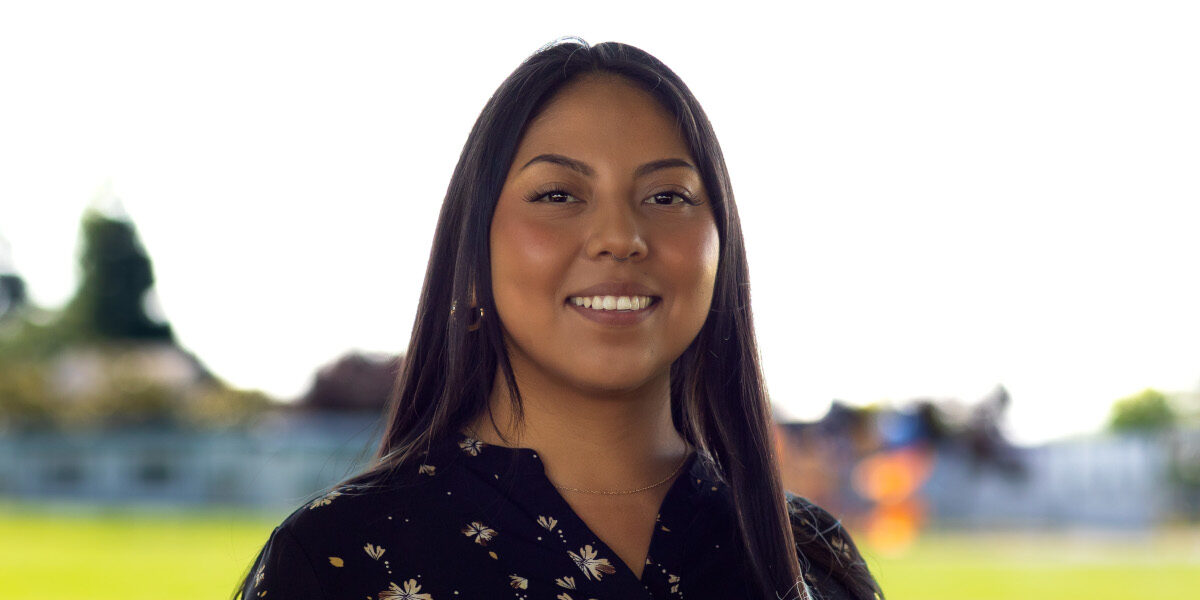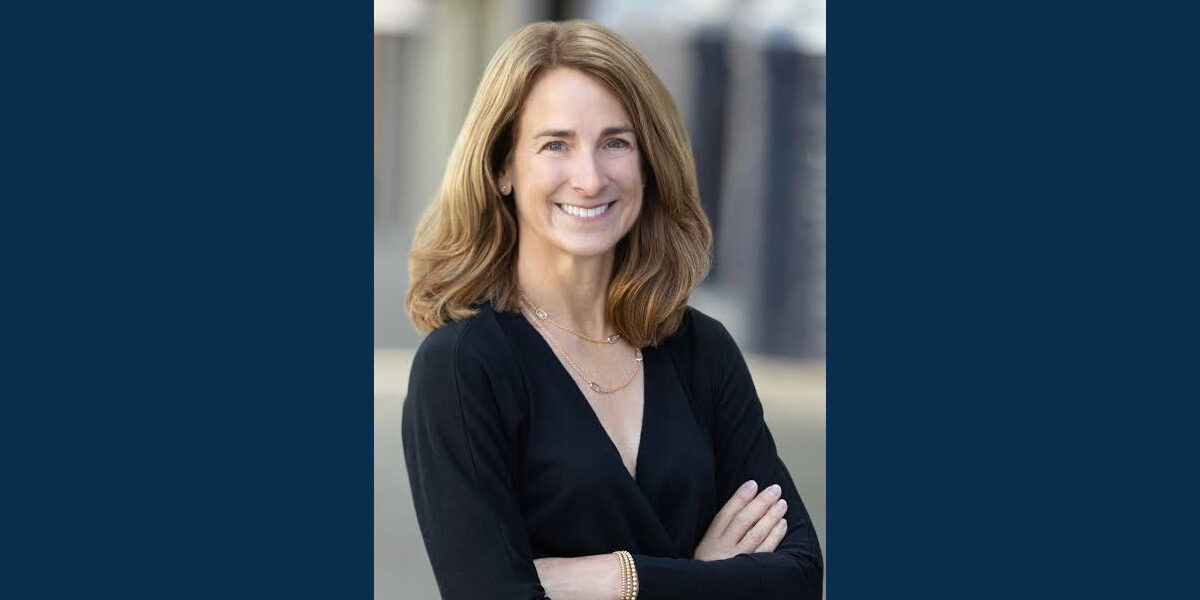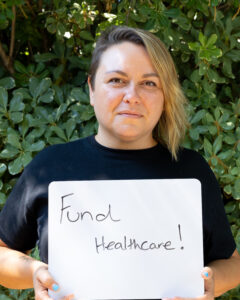

Mental Health Talent Pipeline Spotlight: Meet Elioenai “Eli” Quinones
5 min read. We're very pleased to introduce you to Elioenai "Eli" Quinones, our newest Mental Health Talent Pipeline scholarship recipient. (Photo by Kodak Alcantra-Rodriguez)
Elioenai Quinones was born in North Carolina and moved with her family to Calistogoa, California, when she was five. A couple of years later they were in Santa Rosa, where the family finally put down roots. Elioenai, who goes by Eli, says her experience of growing up in northern Sonoma County left her with a strong community ethic.
“My dad was a pastor at the time, so we would go to church almost every day and my extracurriculars would be volunteer work, whether it was at the food bank or Bayer Farm community garden,” she recalls. “The people I surrounded myself with were always trying to help in some way, whether it was packing bags of food or digging weeds out of the community beds. That shaped the way I interacted with people. I knew the smallest interaction could allow me to better know someone. I was gratified by doing volunteer work.”
After high school, Eli went to Kalamazoo College in Michigan, returning with her bachelor’s degree in the middle of the pandemic. Working initially in several education and service sector settings, she eventually applied to USF Santa Rosa’s graduate program in counseling psychology. In August, with support from the Healthcare Foundation’s Mental Health Talent Pipeline scholarship program, Eli began her first year in the MFT master’s program.
Eli recently shared some reflections on the path that has brought her to a career as a bilingual, bicultural Marriage and Family Therapist serving north county. The following conversation has been edited for length and clarity.
When did you discover your interest in psychology?
In high school the first seeds were planted. I was trying to do the IB [International Baccalaureate] program at Montgomery High School and I took an anthropology class. I’d never really heard of that before. We studied different cultures and different forms of community. I thought, I’ll try something like that in college. It kind of started from there.
“I understand how impactful it can be meeting people where they are emotionally.”
Elioenai “Eli” Quinones
What did you do after college?
I graduated with anthropology and sociology and another major in Spanish. I also had a minor in visual studio arts, in ceramics. I was wondering, how does it all tie together? What am I going to do with my life? Then Covid happened. I had a head injury, and I decided to go home to Santa Rosa and be with my family. The pandemic was still roaring. I thought, I’m going to just give myself some time. I had grown a lot through education, but I hadn’t focused on growing as a person outside of it and I wasn’t sure what I wanted to do. I enjoyed the education setting, so after working at Costco for about a year, I applied at the JC. I did some coordinator jobs there and it was satisfying, knowing that I was helping people. I became a student success technician at the Southwest Center at the JC, which was a key step for me getting to this career path.
How so?
At the Southwest Center I felt a lot of satisfaction in signing people up for, and letting them know about the free credit courses. Most students came to develop their English skills or their trade skills. It was wonderful to connect with so many people. Most were older and so ready to learn, ready to go back to school in some fashion. We were all cheerleaders in that little office. If it hadn’t been a temporary position, I probably would have stayed there. But I knew I had to move on and one of my coworkers there told me about the USF graduate program. I thought, wow, I think I’m going to do it. I knew I eventually wanted to get my master’s, but at the time I had another job lined up. I started as an assistant in the Housing Authority.
What was that like?
It was rough, I’m not going to lie. It’s rough when a lot of our clients are coming in during the winter with nowhere to go and you have to tell them about the process, how it’s an open or closed waitlist and how not enough vouchers are provided to everyone who gets to apply. I was doing the best that I could but I felt so limited in what I could offer. I eventually became an intake and ongoing occupancy specialist. I’m able to go through the process with someone onboarding the program and also provide assistance to those who have been in our program.
I’ve learned that whether they have rental assistance or not, housing is always a fragile subject. It’s a very physical need. Having more one-on-one time with the tenants allowed me to hear their stories, experiences, and their struggles. They have so much that they carry with them. Even when clients come in simply to obtain help completing paperwork or report changes in their households, I understand how impactful it can be meeting them where they are emotionally. Allowing the service to become humanizing, I realized that what is most meaningful for me is allowing them some company.
“During our last meeting, they went around in a circle and spoke about their gratitude for the time and space that allowed them to put away their jobs and home responsibilities, and just go into time for themselves and for how they were feeling. That cemented it. I said, OK, I want to do something like this for the rest of my life.”
Elioenai “Eli” Quinones
Did that turn you back towards the USF program?
Almost! I knew I wanted to be professionally equipped to do some emotional work with people. About a year in, I attempted to apply to the USF program but internally I still knew I was not ready and just before submitting it, I let it go. Time passed. Then came the final push, the catalyst that urged me to apply to the program this year. An opportunity to facilitate a series of workshops came to me at a time when I was experiencing the last stages of mourning for a late aunt of mine who passed from cancer. Through therapy, I had worked through most of my anger and hopelessness of witnessing a person undergo so much pain alone as she did in her life. I could tell that a big part of why I took on this role was understanding how detrimental it can be for a body to keep so many emotions locked inside and wanting to create a space where I could channel the importance of liberating emotions in a safe environment.
I worked with La Plaza in a program facilitating art activities with a group of women, which was also a way or a modality to provide healing. It was powerful to experience and especially hear the feedback from the women who participated. During our last meeting, they went around in a circle and spoke about their gratitude for the time and space that allowed them to put away their jobs and home responsibilities, and just go into time for themselves and for how they were feeling. That cemented it. I said, OK, I want to do something like this for the rest of my life. I reflected on the experience a lot afterward. I decided I would obtain the tools and education to experience something that powerful again so I submitted my USF MFT application.
Are there others you credit with helping you get to this point in your career?
Definitely my parents. In a very consistent way, they always focused and encouraged the value of education and reaching for higher education. They also allowed me to explore mental health. I am also crediting my undergrad professor, Dr. Francisco Villegas, at Kalamazoo College. As a mentor he was always asking me, So what’s next? Where do you want to go for grad school? I think at the time I was still too green, still figuring out what I wanted to do. But his voice remained and was able to push me forward towards my goals. He was one of the first people I called upon hearing the news of being accepted and receiving the scholarship.
What is your favorite mental health activity for yourself?
I like to draw or paint but ideally, it would be going back to ceramics again. There’s a quality of cultivating presence when you work with clay. For me, ceramics became like a portal. It is as if ceramics allows me to fulfill an expression into reality, a 3D space. I also enjoy the complexity of the material. Sometimes, no matter how hard you try, you just can’t force clay to do what you want it to. It’s going to take some time and some reworking. In some cases, you just end up doing something completely different because that’s what it asks you to do.

Related News + Stories
Invest in Our Community
Your support is vital to our collective vision of eliminating health inequities in northern Sonoma County.
Donate



